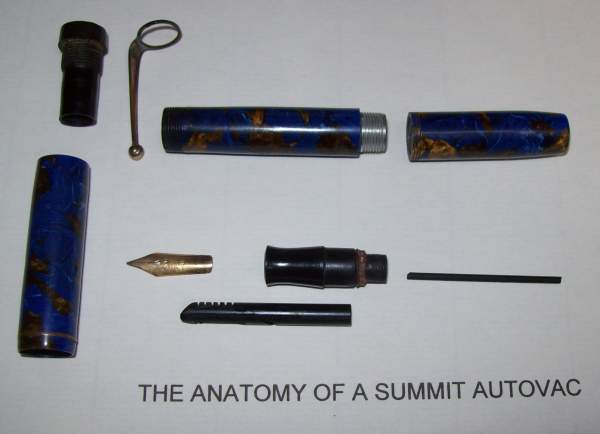AUTO - VACS
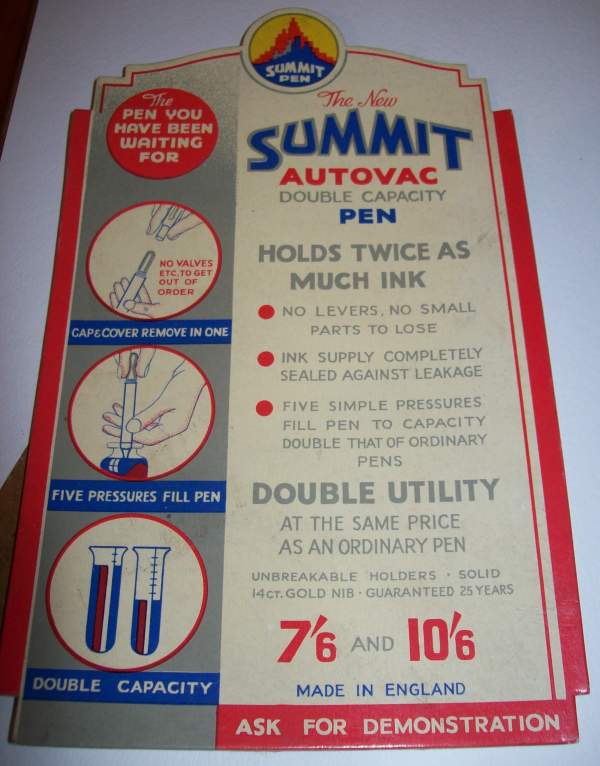
The Auto-Vac model is one that creates considerable confusion.
Curzon's introduced the model in the early 1930's, and I believe that it was originally marketed using an old model name SLIK, extended to "The Slik Vacuum". Costing 2/6 it is easily recognised by the wide filigree capband:
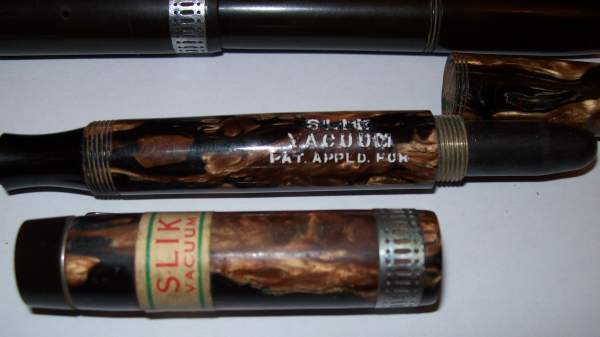
By 1934 it was being listed as the Autovac V76 and the Autovac V106, at the respective 7/6 and 10/6 price points. This is clearly shown in the desk advert above. I believe that the difference between the models was in the Gold plated furnishings and possibly the nib.
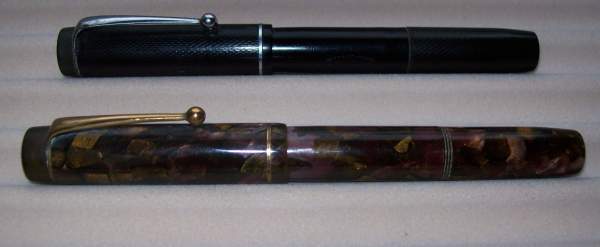
I believe these to be examples of the V76 (top) & V106 (below). Neither offer a V identity mark.
The barrel stamp on these pens clearly indicate they are Summit Auto-Vacs (the Curzon name is absent), and the lower one also carries the "made under Licence" mark.
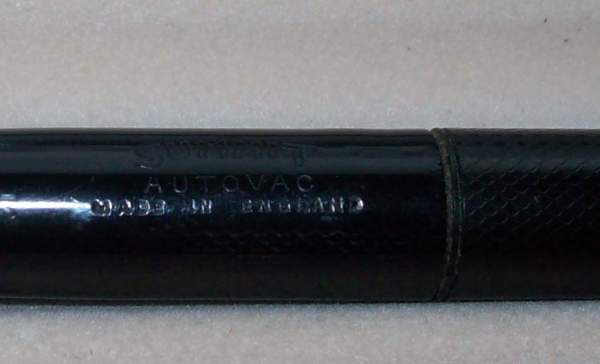
The nib on the black model is a Phillips, but the marbled pen carries a "Auto-Vac" 14ct nib;
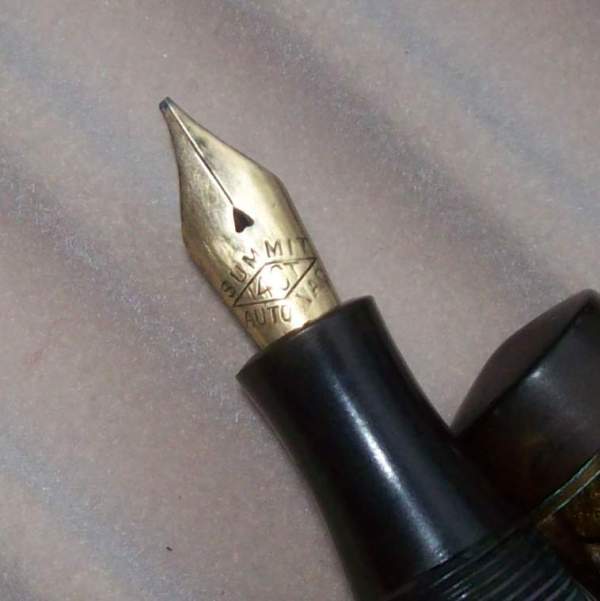
The Auto-vac appears to have been a popular model for "own brand" production;
Here is a Regent Vacuum, that is clearly based on the early Auto-Vac design, and has the Pat.Appld For stamp, with no other brand markings:
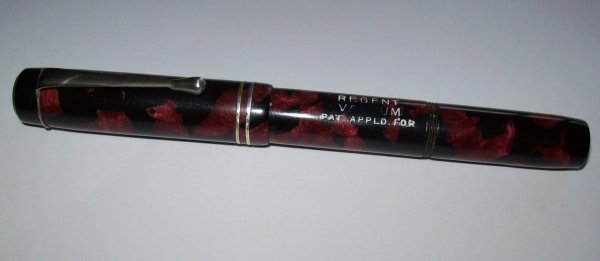
National Security examples in black turn up quite regularly (and less frequently in more interesting colours), and here are two further examples that appear to have been customised for specific outlets:
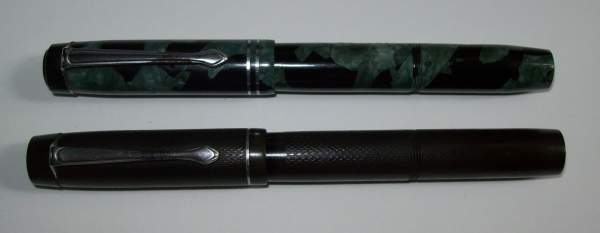
A recently acquired example, purchased from ebay has all indications of being a Mentmore made item (no brand name, warranted SS nib, unusual & cheaper pocket clip);

However on close inspection there is a patent no engraved on the barrel; 414929. This confirms that the item is a Lang made product, with the patent having been registered by Ernest Samuel Wade 1933. The diagram, taken from the patent shows the typical Auto-vac mechanism:

Indeed the filling mechanism of all the Autovac's I have seen so far appear to follow a standard approach: the barrel contains a full size ink-sac which drops through the metal screw connection at the mid-point, and which can be squeezed to fill the pen. Here is an example that retains the original (semi-petrified) sac:
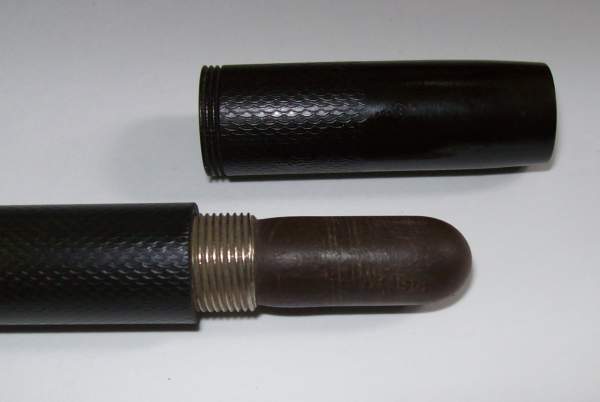
And below is an example where the sac has been replaced.
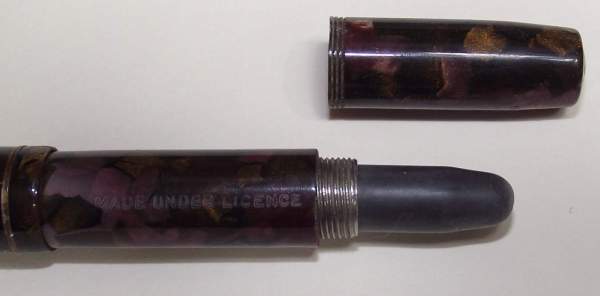
Of the modern ink-sacs that are readily available I find that a size 20 is a good starting point.
So where is the confusion?
There is another type of bulb-filler that crops up regularly, the pens when closed look very similar. These are often unbranded, but also appear in brands such as National Security, Rufford, etc. In those cases where the mid-barrel of these pens is transparent the difference is quite easy to spot, but where a consistent colour is used throughout (such as the black chased National Security) it can be difficult to differentiate without opening the pen.
The example below is a "visi-ink" which I suspect was a Mentmore product. It shows clearly that the ink sac / bulb fits onto the the barrel at the mid point.
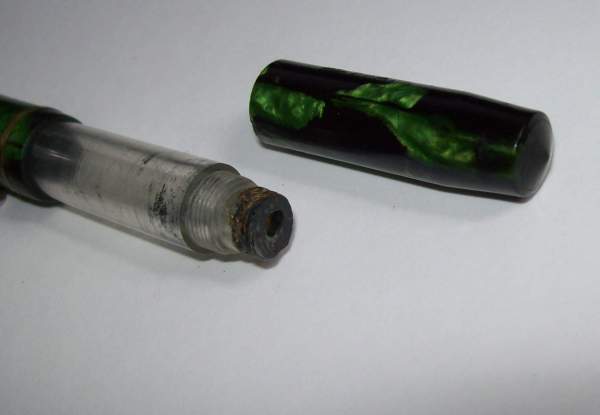
And here is a very similar pen (possibly from the same manufacturer), carrying the Rufford brand, and thus made for Boots the Chemist. The bulb sac is correctly attached to the end piece of the barrel:
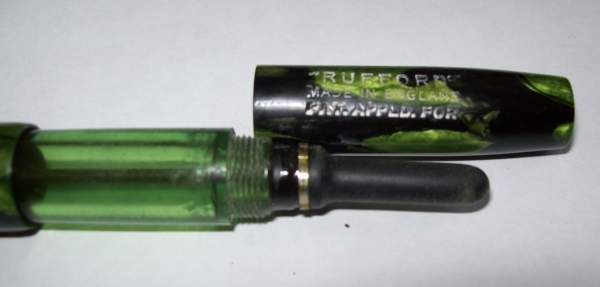
Lang certainly made pens with this other type of bulb-filling system. Below is a 'no name' example, with a transparent chased mid section. The clip (and jewel) is typical Lang, and the blind cap features a Double Jewel typical of those found on the S175. I believe this to have been the pen that was offered on the reverse of tea-cards during the 1930's (see company history section):
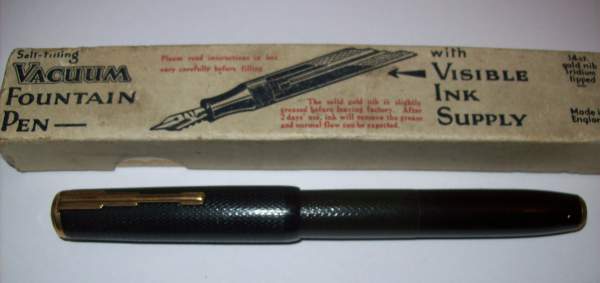
And below is another example that must be beyond doubt as to the manufacturer. The only branding is "Eastwoods Humber", but the unusual aspect of this pen is the 'blind cap' which has to be next to useless as a practical development.
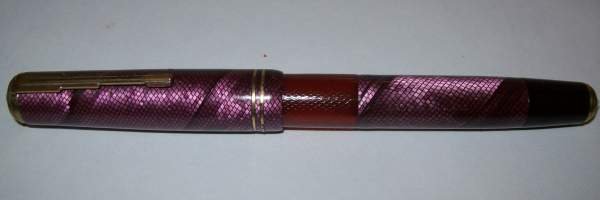
The dismantled Autovac shown below should help clarify the difference in design:
